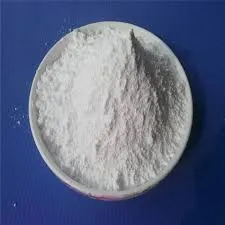Understanding Pentoxifylline A Comprehensive Overview
Pentoxifylline is a medication that has garnered attention in the medical community for its ability to improve blood flow and enhance oxygen delivery to tissues. Originally developed as a treatment for peripheral vascular disease, pentoxifylline is often prescribed for various conditions, particularly those involving circulation issues. This article aims to provide an in-depth look at pentoxifylline, including its mechanism of action, therapeutic uses, potential side effects, and considerations for use.
Mechanism of Action
Pentoxifylline is classified as a xanthine derivative and works primarily by increasing the flexibility of red blood cells. It accomplishes this by reducing the viscosity of blood, which in turn enhances microcirculation and increases blood flow in areas that may have suffered from restricted circulation. This is particularly beneficial for patients with intermittent claudication, a condition characterized by cramping pain in the legs due to insufficient blood flow during physical activity.
In addition to improving blood flow, pentoxifylline has anti-inflammatory properties. It inhibits the production of inflammatory cytokines and can reduce the aggregation of platelets, further promoting better circulation. This dual action of improving blood flow and reducing inflammation has made pentoxifylline a valuable treatment option for various vascular conditions.
Therapeutic Uses
Pentoxifylline is primarily used to treat intermittent claudication associated with peripheral arterial disease. By enhancing blood flow, it helps patients walk further without pain, significantly improving their quality of life. Beyond this indication, pentoxifylline has been explored for use in treating other conditions, including
pentoxifylline tab

2. Chronic Venous Insufficiency The medication can alleviate symptoms associated with chronic venous insufficiency, such as swelling and discomfort in the legs.
3. Cognitive Impairment Some studies suggest that pentoxifylline might have potential benefits in improving cognitive function in individuals with vascular dementia, though further research is needed in this area.
4. Fetal Growth Restrictions In obstetrics, pentoxifylline has been investigated for its potential to improve placental blood flow in pregnancies complicated by impaired fetal growth.
Side Effects and Considerations
Like all medications, pentoxifylline is not without potential side effects. Common side effects include gastrointestinal discomfort, nausea, dizziness, and headache. Serious side effects, although rare, can include allergic reactions and bleeding complications. Patients with a history of bleeding disorders or those taking anticoagulant medications should use pentoxifylline with caution and under close medical supervision.
It is also essential for patients to inform their healthcare provider of all medications they are taking, as pentoxifylline can interact with certain other drugs, potentially altering their effects. Regular monitoring and follow-up appointments are crucial for those on long-term pentoxifylline therapy to ensure its efficacy and to manage any side effects.
Conclusion
Pentoxifylline is a valuable medication that offers significant benefits for patients suffering from circulation-related conditions. By enhancing blood flow and reducing inflammation, it can improve mobility and quality of life for those with intermittent claudication and other vascular issues. However, as with any medication, its use must be carefully considered and monitored. Patients should work closely with their healthcare providers to determine if pentoxifylline is appropriate for their specific needs and to manage any potential side effects effectively. As research continues, pentoxifylline may find even broader applications in the medical field, further cementing its role in treating conditions associated with poor blood flow.

